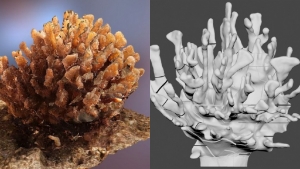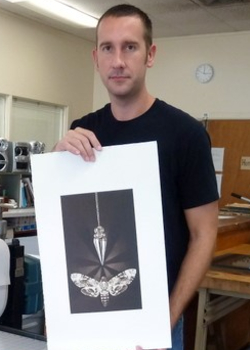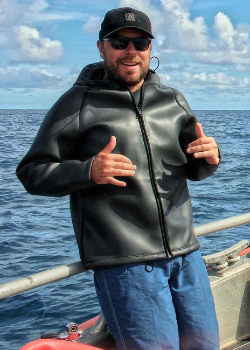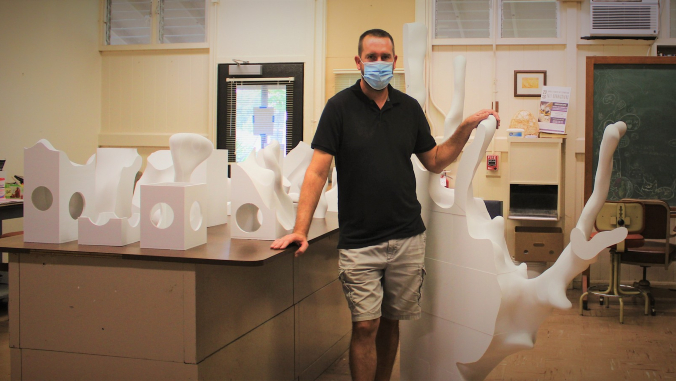At first glance, the fields of art and science could not be any more different, any more unrelated, but what happens when the worlds of artistry and analysis collide? The answer: collaborative innovation.

One such example is the work between the University of Hawaiʻi at Hilo’s Jonathon “Jon” E. Goebel, an associate professor of art, and John H.R. Burns, an assistant professor of marine science. The combination of their expertise is how a 3D coral project was born.
“Jonathon and I worked closely together developing the data visualization class at UH Hilo, which combined students from art, computer science and marine science,” said Burns. “The goal was to create an interdisciplinary course that combined the student skill sets to create digital outreach tools to share important environmental information.”
The project is funded with several grants through both the arts and sciences. Additionally, the project is supported by the Academy for Creative Media, a UH systemwide endeavor based at UH Mānoa that provides technology for the UH Hilo art department.
- Related UH News story: 3D models for better coral reef monitoring developed at UH Hilo, March 22, 2019


The pair had several students that enjoyed the 3D reconstructions of coral reefs, some of which were featured in a 30-day art show on Oʻahu. Since then, they have worked to create a massive 3D print exhibition as a way to captivate audiences and share information about the importance of coral reefs.
To create an accurate, to-scale representation of the coral, Burns lent his scans of the coral species Pocillopora meandrina, found in Waiʻopae, Hawaiʻi Island, to Goebel who then enlarged a portion of this coral by 80,000%.
Goebel then began creating this larger-than-life piece using a technique called photogrammetry, or the stitching together of hundreds of overlapping photographs to create a 3D model. Once this was completed, the coral was sliced into fourths with the goal to enlarge and print one quarter of the original coral, piece by piece. After one year and more than 1,000 hours of 3D modeling cleanup, structural engineering and printing, only about one third of the project has been printed.
Goebel’s immediate goal is for the final product to “serve as an eye-catching, greatly enlarged, yet anatomically correct representation of the coral colony.” He added, “The experience of seeing this structure in real life from the perspective of a smaller aquatic organism is meant to provide a perceptual shift in the significance that corals play in the ocean’s ecosystem.”
The resulting artwork will also serve as a reminder of the value of interdisciplinary collaboration.
“It has been an exceptionally fun experience working with Jonathan on this project,” said Burns. “We are both passionate about showcasing the often overlooked crossover between art and science. Creating art is a science in itself and science often captures the beauty of nature so there is so much potential for combining the two fields.”
Read the full story at UH Hilo Stories.
—By Kiaria Zoi Nakamura, a UH Hilo English student


